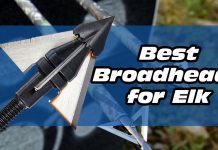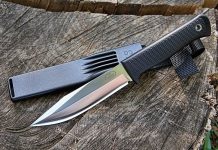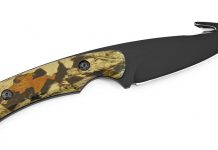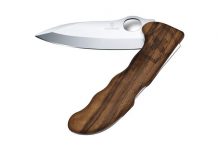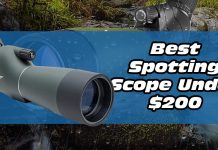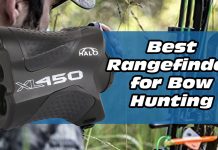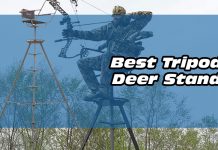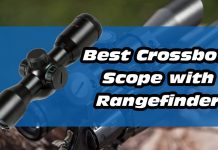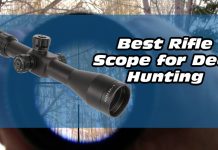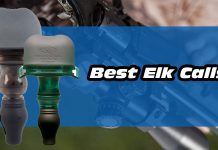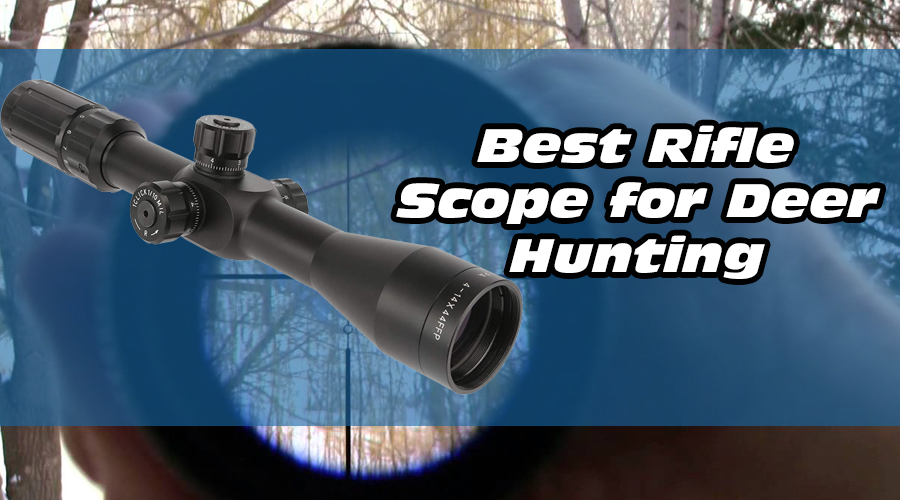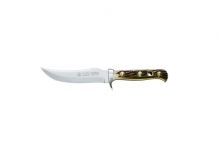What are the Top Deer Hunting Rifle Scopes?
Whenever you talk to deer hunters, you will always hear a narrative on how it is easy to go hunting with a rifle than with a crossbow. Well, there is some truth in that statement. I fact, to a large extent.
However, it is also true that not every rifle hunter who goes into the woods comes back with a dead buck. The reason might not entirely be the level of experience and expertise.
Other factors such as the type of rifle they are using might play a significant role, but not as much as the rifle scope. Even someone with the worst gun can still gun down a deer if they have a clear shot.
If the rifle scope does not match the type of gun you are using, it might not be very helpful. Put differently, you cannot just walk into a gun store, buy a gun, and then fork out some extra dollars for any rifle scope.
There are different brands that are already in the market. Thus, it is up to you to do your research and ensure you are investing your money in the right product.
To make the process easier, we have singled out our top picks that could be of help.
① Nikon Buckmasters II
 If you are looking forwards to buying a rifle scope from a reputable company, this should be your go-to option. Nikon has established its name among its customers, and you are not likely to regret your choice.
If you are looking forwards to buying a rifle scope from a reputable company, this should be your go-to option. Nikon has established its name among its customers, and you are not likely to regret your choice.
This Buckmaster II from Nikon has been equipped with a variable scope, which essentially means that you can adjust the magnification to accord to your shooting range. In other words, it has a magnification ranging from 3x to 9x.
If your shooting range is not so far, you can make your target look thrice as larger as its normal size. Likewise, if you are shooting from far, you have the option of making it appear nine times bigger.
Also, Buckmaster has a reticle that has been designed to help the hunter foretell where his shot will land immediately he has released the trigger. This means that the chances of having a bad shot are minute.
Nikon has used several coatings on the scope’s lenses, ensuring they remain clear and bright.
Pros
- Uses several coatings for lenses
- Has a nice reticle
- Adjustable magnifications
Cons
- The focus cannot be adjusted
- The length of its tube is a tad bit short
② Vortex Optics Diamondback
One of the things you want to look out for before purchasing a rifle scope is how durable they will be. And do you know what the best indicator of durability is? Hold on to find out.
A product warranty is often a sign of goodwill from the manufacturers. It is highly unlikely that you can promise to change your customer’s product in case it doesn’t serve its purpose when you know it will break down after a week.
This Diamondback rifle scope from Vortex has surpassed those expectations.
Another selling point of these scopes is the fact that it comes in a wide array of magnification options.
The least has magnification options ranging between 1.7x and 5x, the mid-range one has settings varying between 3.5x and 10x while the other has a magnification ranging between 4x and 12x.
The diameters of the objective lenses for these scopes are 32, 50, and 40 millimeters respectively.
Also, you get to choose the type of reticle that works well for you.
Pros
- Has a wide array of magnification options
- Comes with a warranty
- The lenses have several coatings for clarity
Cons
- The warranty can be misused
- The eye box is not as wide

③ Primary Arms FFP
In the third place, we have this Primary Arms Rifle scope made by a Texas-based company. Straight off, you should know that the company has built a name for itself in under 20 years.
For starters, Primary Arms has a scope of 4-14×44. Hey, don’t get off the track. In case you are new to these figures, they simply mean that this is a variable rifle scope.
You can adjust the magnification settings between 4x and 14x, depending on your hunting area and the shooting distance. The 44 means that the objective lens has a diameter of 44 millimeters.
Well, this is wide enough to allow enough light through to the ocular lens. So, questions that you might be having in mind relating to clarity re answered in the affirmative. It is sufficient!
Further, the rifle scope has lenses that can be adjusted to correct parallax errors at the side, plus a bullet drop compensator reticle for predictable shots.
Pros
- It has a BDC reticle
- The objective lens has a wide diameter
- Can be used for both short and long-range hunting
Cons
- Eye relief is inadequate
- Might have problems when it comes to quality control

④ UTG Compact Scope
This rifle scope is brought to you by a Missouri-based rifle manufacturing company that has been in business for over 20 years. During that time, they have never failed in matters of quality.
UTG is a 3-12×44 rifle scope. Just to clarify things, its magnification can be adjusted to make your target object appear three times bigger, 12 times bigger, or anywhere in between.
The objective lens’ diameter is 44 millimeters. This opening is big enough to let in enough light that becomes necessary when you are looking for clear shots, as you will need more brightness to reach the ocular lens.
When it comes to UTG’s reticle, it features a bullet drop compensator (what is often called a mil-dot reticle). This comes to your aid if you want to know where you shot is likely to land after you have pulled the trigger.
The length of the tube stands at 30 millimeters. The tube has been filled with nitrogen for increased efficiency.
Pros
- Uses a mil-dot reticle
- Has a variable magnification
- The objective lens’ diameter is wide
Cons
- Its focus knob is a tad rigid
- The rifle scope is heavy

⑤ Bushnell Banner
Like we have done with all the products in our top picks, this night and dawn rifle scope has been designed by Bushnell which is an American-based company. For years, the company has been on the run for greatness.
What is unique about this particular brand? Unlike the other riflescopes that we have already discussed, Bushnell can be used for hunting during the early morning hours or late in the evening when there is no sufficient light passing through the objective lens.
Although you are likely to encounter many bucks during this time, your hunting might be unsuccessful if the scope is not adapted to such low-light environments.
The brand comes in 2 magnification options. The first is designed to give magnification measurements ranging between 4x and 12x while the second caters for between 6x and 18x magnification ranges.
The objective lens diameter of the two stands at 40 and 50 millimeters respectively. Plus, the lenses used here have several coatings to improve clarity.
The reticle is unmatched, guiding to where you should direct your shot.
Pros
- Has a wide range of magnification options
- Can be used for dusk and dawn hunting
- Uses an excellent reticle
Cons
- Inadequate eye relief
- Cannot be used with a magnum rifle

Buying a Rifle Cope; What to Consider
Having a quality rifle scope may turn out to be much more advantageous than having a quality rifle with a poor scope. You see, if you have a clear target, even the worst gun in the market can still make that shot.
On the contrary, you will get nowhere near killing a buy if you possess a high-end gun with a scope that is not clear. On the ground, however, you must invest in both a quality gun and a perfect scope.
Well, quality is relative. So what exactly do we mean here when we are talking of quality? Ideally, it should be able to serve its functions perfectly without any inconveniences. For instance, you want to ensure that the scope is user friendly.
That is, it should be easy to use and it should provide the necessary eye relief you need to continue hunting. Also, it should have adjustable magnification options. This will be reliable whether you are taking your shot from a close-range or further away.
Plus, it also becomes handy depending on your hunting terrain.
In this part, we lay out the key features that make up an excellent rifle scope. You should peruse through before proceeding to that gun shop.
Type
You might want to consider the type of the rifle scope before forking out hundreds of dollars to purchase it. There are two types of rifle scopes. This include variable scopes and fixed scopes. What is the difference?
Fixed scopes
As the name suggests, these types of rifle scopes have a fixed magnification level. This means that you will have to move constantly to align yourself with your target as you cannot do so from a fixed position.
While fixed scopes may prove to be pocket friendly, they might pose some difficulties when it comes to deer hunting. This is because bucks have excellent hearing, and they might detect the slightest movement.
As a result, you might spend the whole day out hunting or even go back home with nothing. You should therefore try as much to avoid these types of rifle scopes unless it is necessary.
If you are working within a budget, however, this is a nice place to start from. The same applies to newbies who still want to gain some experience in the area.
Variable scopes
These ones are the opposite of fixed scopes. Simply put, variable rifle scopes have several adjustable magnification levels. You can simply use the magnification adjustment ring to bring the animal closer to you or move it further.
It all depends on your shooting range. It naturally follows that variable rifle scopes are much more expensive than their fixed counterparts. Given that a rifle scope is a long time investment, it is worth the shot.
The objective lens
An objective lens is found at the furthest end of the rifle scope, whose main purpose is allowing light to pass through. The ocular lens, on the other hand, is that which is found closer to your eye.
The last thing you want when you are out chasing a deer is an objective lens that does not let in enough light into the ocular lens. This is especially the case if you prefer hunting when there is minimum light like at dusk or dawn.
As such, you want to ensure that the objective lens has a wider diameter to let in as much light as possible. But does that mean that there is no limitation on this diameter? No, that would not be wise.
It is not refutable that more light will pass through as the diameter increases. But when it goes beyond a certain limit, it starts presenting problems. You can use 50 millimeters as the widest it can get.
Beyond this, it means the objective lens will be mounted far much up the gun barrel. As a result, this will affect your shooting accuracy as your eyes will not be properly aligned with the lenses.
Going up to 50 millimeters might be unnecessary, except in exceptional circumstances. Averagely, a rifle scope whose objective lens diameter measures between 40 and 42 millimeters works just as perfect.
You can use it to gun down deer and other big game at the end of the day.
Magnification
You should able a rifle scope basing on your area of hunting and the type of animal that you will be going after. Averagely, scopes with a magnification between 3x and 9x are common for hunters pursuing big animals like deer.
You can also opt to use those with magnification options ranging between 4x and 12x, as they also work perfectly well with big game. This, however, will work best if you have a shooting range that does not exceed 300 yards.
The terrain of your hunting environment should also be able to affect the type of magnification you should go for. If for instance, you are used to hunting in thick bushes or woods, smaller magnification will work just fine.
But for hunters who are looking forward to gun down their targets in an open place, greater magnifications will be necessary. Just so you know, advances in technology have seen the development of rifle scopes that have magnification power reaching 20x.
Here is a nice tip. In case you are a hunter with diverse hunting interests (say you go after turkeys and deer), it is important to go for a rifle scope that will prove to be versatile and can adapt to both hunting requirements.
One with a magnification power ranging between 2x and 20x, for example, will be an excellent buy. On the downside, you will have to use much more money as opposed to buying a standard rifle scope.
Glass Quality
The better the quality of the glass, the better the lenses, and the clearer the images you will get. There are two main types of qualities that you might have to choose from, depending on your budget.
As always, the best quality will always require extra investment but to your advantage. For a low budget, you might want to get lenses using extra low dispersion (ED) glass.
If you can manage to get around the hefty prices, you can settle for the high definition (HD) glass. The difference is significant, but it does not mean that an ED glass will not perform as well as the HD glass.
Both will give you a clear and sharp image.
Still, on the quality of the glass, you want to check out the coatings that have been used. Why is this the case? The number of coatings directly affects the quality of images produced by the scope.
As a general rule of thumb, you should always go for lenses with several layers of coatings as they will enhance the transmission of light rays. Also, high-quality glasses tend to have more coatings. This, therefore, means there will be a difference in the prices.
Warranty
Usually, a product warranty is a sign that the product is of good quality and it that it will serve you for a while before it wears out. However, not all manufacturers usually give you a product warranty.
So what happens if you buy that rifle scope and it only lasts for a week? Or what if you bought it online and on arrival, you find that it is defective? That means you will have to spend more money trying to find a replacement.
That does not sound fair or right. So to be safe, always ensure that the company whose product you want to buy guarantees a given period within which you can return the product if it fails to work, or they can repair it for free.
But that does not mean that you take advantage of the opportunity and use the rifle scope badly.
Customer reviews
One of the best ways to tell whether a rifle scope is worth the value of your money is by checking out what other buyers are saying about it. Given that they spent a considerable amount of money on the product, they are likely to tell the truth.
Reading customer reviews is especially important if you are purchasing your rifle scope from an online platform where you do not have the chance to inspect it before paying your money.
If there are too many complaints about a given brand, you should stay away from it. Go for products that have a 5-star rating or 4 at the minimum. At the end of the day, you might not be able to return the product after it is shipped.
Alternatively, you might have to pay some fee before they can take back the product for a replacement.
The cost
This aspect can be looked at from two positions. The first has to do with the quality of the rifle scope and time of the day you like hunting. If you want a quality product, you will have to pay more for it.
This is especially the case with high-end products from reputable companies. In real sense, you pay for the brand not the product. Likewise, if you love hunting when there is low light like at dusk and dawn, you will need a more expensive rifle scope.
This is unlike those hunting during the day, as the amount of light can be supplemented. This is not a rule though. If you have the money why not invest in the best scope once and for all?
The second position has to do with your budget. Don’t strain too much to buy a rifle scope that is beyond your budget. You can be sure that you will always get a quality scope with high performance, going at a cheaper price.
Conclusion
Having taken you through the various brands of rifle scopes that feature top rankings according to the numerous studies and reviews that we carried out, finding the perfect one for you should be easier.
But again, it will not be as easy as walking into the gun shop and asking the attendant to hand you a Bushnell or a UTG rifle scope. Some factors are important, and you should consider looking into them.
This includes the magnification ranges. Are you a hunter who goes deer hunting in the woods or in a clear area? You see, the scope will play a vital role.
With all these aspects in mind, we recommend the Nikon Backmaster II for your next deer hunt. Like we had pointed out, Nikon is a reputable company that has already established a niche in the rifle manufacturing industry.
The scope has a magnification range varying between 3x and 9x, which is mid-range and can be used to gun down big game like deer.
It uses a bullet drop compensator reticle which will come in handy to ensure you have a clear shot by showing you where your shot will land after pulling the trigger.
You should definitely get yourself this rifle scope.


